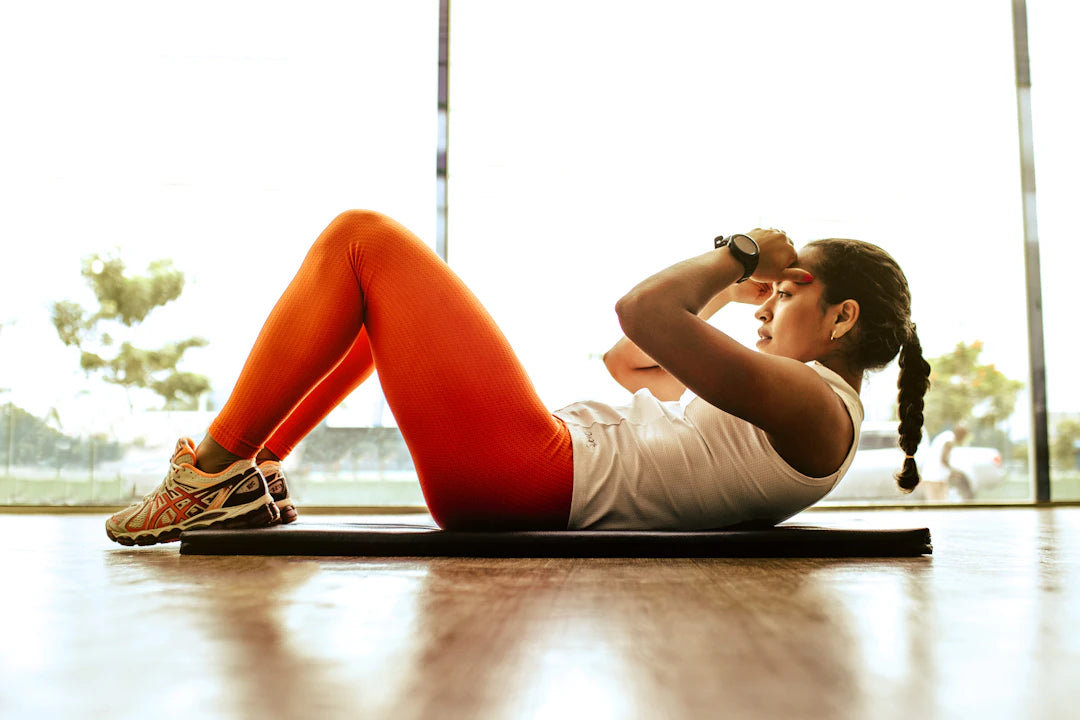
Stretch Your Way to Flexibility: Easy Routines for All Ages
Share
Overview
This blog emphasizes the importance of flexibility for adults aged 50 and above, highlighting its benefits for joint health, posture, balance, and stress relief. It addresses common challenges seniors face when starting a stretching routine and offers gentle stretching exercises suitable for morning, midday, and evening. Additional tips for maintaining flexibility and the value of finding a supportive community are also discussed, encouraging seniors to prioritize their flexibility for improved overall wellness.
Frequently Asked Questions
1. Why is flexibility important for adults aged 50 and above?
2. What are some common challenges older adults face when starting a stretching routine?
3. What are examples of gentle stretching routines for seniors?
4. How often should seniors stretch to maintain flexibility?
5. What additional practices can enhance the effects of stretching for seniors?
As we age, maintaining flexibility often becomes a challenge, but it doesn't have to be! Stretching is an essential part of keeping our bodies agile, reducing stiffness, and promoting overall wellness. Not only does regular stretching enhance our physical capabilities, but it can also improve our mental well-being. If you're among adults aged 50 and above looking for easy stretching routines, you've come to the right place! This blog will guide you through gentle stretches tailored for improved flexibility and incorporate some low-impact workouts for seniors.
The Importance of Flexibility in Your 50s and Beyond
Flexibility plays a crucial role in our daily lives, especially as we age. Here are some significant benefits:
- Improved Joint Health: Regular stretching keeps our joints healthy, reducing the risk of stiffness and pain.
- Better Posture: Stretching helps align the spine, which can combat the natural tendency toward stooping that often comes with age.
- Enhanced Balance: Greater flexibility contributes to better balance, reducing the risk of falls.
- Stress Relief: Simple stretching routines can also offer a calming effect, helping to reduce anxiety and promote relaxation.
Common Challenges for Older Adults
While embracing stretching is beneficial, many older adults face challenges that can deter them from starting or maintaining a routine. Here are a few common hurdles:
- Joint Pain: Conditions like arthritis can make movement uncomfortable.
- Balance Issues: Fear of falling can prevent individuals from trying new exercises.
- Motivation Struggles: A lack of understanding or belief in the importance of regular exercise can hinder progress.
But fear not! This blog offers simple tips and stretching routines designed with seniors in mind. You'll feel supported and motivated to enhance your flexibility while addressing any concerns you may have.
Gentle Stretching Routines for Improved Flexibility
Morning Stretch Routine
Start your day with an easy stretching routine to prepare your body for the day ahead. Try the following stretches, holding each position for 15-30 seconds:
- Neck Stretch: Gently tilt your head to one side, allowing the opposite ear to move closer to your shoulder. Hold and then switch sides.
- Shoulder Shrugs: Lift your shoulders towards your ears, hold for a moment, then relax them down. Repeat several times for tension relief.
- Upper Back Stretch: Sit or stand with arms extended forward at shoulder height. Cross your arms and gently round your upper back, feeling the stretch between your shoulder blades.
- Seated Cat-Cow Stretch: While sitting, alternate between arching your back (cat) and gently pulling your chest forward (cow) to promote spinal flexibility.
- Hamstring Stretch: While seated, extend one leg out while keeping the other foot on the ground. Gently lean forward to stretch the extended leg's hamstring.
Incorporating these stretches not only enhances flexibility but can also serve as a gentle wake-up call for your body. Remember to breathe deeply and move at your own pace.
Midday Stretch Break
Taking a break to stretch during the day can rejuvenate your body and mind. Here’s a quick routine to invigorate you.
- Wrist and Finger Stretch: Extend one arm in front of you, palm facing up. Use the other hand to gently pull back on the fingers, stretching the wrist and forearm.
- Torso Twist: While seated, place your right hand on the back of the chair, twisting your torso to the right while using your left hand to gently push against your knees for support. Repeat on the other side.
- Hip Flexor Stretch: Stand up, and take a step back with one foot. Bend your front knee while keeping the back leg straight, feeling the stretch in the hip flexor. Switch legs.
These light exercises can provide a refreshing boost, warding off stiffness and fatigue. Plus, remember that combining these stretches with low-impact workouts for seniors, like walking or swimming, can further enhance your flexibility.
Evening Relaxation Stretch
Wind down your day with calming stretches that signal to your body it's time to relax. Here’s a simple routine designed for this purpose:
- Child's Pose: Start on your hands and knees, then sit back on your heels, stretching your arms forward. This pose releases tension along the spine.
- Seated Forward Bend: Sit with legs extended, and slowly reach toward your toes, keeping the spine straight. This will stretch the back and hamstrings gently.
- Reclining Bound Angle Pose: Lie on your back and bring the soles of your feet together, letting your knees fall to the sides. Relax and breathe deeply.
This evening stretch routine can prepare you for a restful night’s sleep. Allow yourself to focus on your breath, letting go of any stress accumulated during the day.
Additional Tips for Maintaining Flexibility
In addition to the stretching routines listed above, here are some friendly suggestions to help you maintain flexibility over time:
- Stay Consistent: Aim to stretch at least three times a week. Consistency will yield the best results.
- Listen to Your Body: Pay attention to your body’s signals. If something feels painful, modify the stretch or back off a bit.
- Pair with Low-Impact Workouts for Seniors: Activities like walking, swimming, or yoga complement your stretching routine perfectly and support overall joint health.
- Hydration is Key: Keeping your muscles hydrated is vital. Drink plenty of water before and after exercise.
Integrating these healthy lifestyle habits along with stretching can make a significant difference in improving flexibility and overall quality of life.
Find Your Stretching Community
Sometimes motivation can be hard to find, so consider joining a stretching or low-impact exercise group in your area. Not only can socializing boost motivation, but it also helps create a sense of accountability. Group classes provide support and encouragement, allowing you to share your experiences and tips with others facing similar challenges.
Additionally, look for online communities or resources that focus on fitness for seniors. These spaces are full of inspiration and advice, and they're often just a click away!
Your Journey to Flexibility Awaits!
Your journey towards improved flexibility begins right now! With these easy stretching routines and supportive practices, you're on your way to feeling more comfortable in your body and spirit. Remember, it's never too late to start; every little stretch counts! Embrace this opportunity, and make your flexibility your own—because you deserve it. Commit today to prioritizing your body, and soon you will find the movement getting easier and more enjoyable. Here’s to a more flexible and vibrant you!
